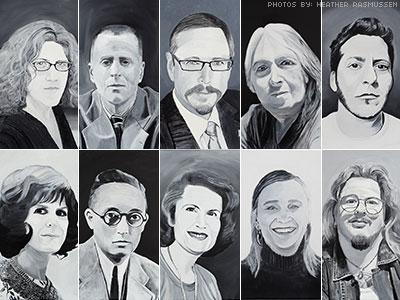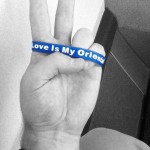
This week has been Transgender Awareness Week, culminating in yesterday’s Transgender Day of Remembrance (TDOR), on which we honor trans people who have been victims of homicide. Some of you joined us yesterday in observance, and we’ve compiled a few resources for those of you who want to read more. The Transgender Violence Tracking Portal reports at least 270* trans people have been murdered in the last year alone, noting that those are only the reported incidents. The 2014 report** from the National Coalition of Anti-Violence Programs compiles incidents of violence perpetrated in 2013, breaking down statistics of victims and survivors by gender identity, race, sexual orientation and more, noting this about the increased risk of violence faced by transgender women especially:
Transgender women were more likely to experience police violence, discrimination, harassment, sexual violence, threats, and intimidation. Transgender women were more likely to experience hate violence in shelters and in public areas. Transgender women were less likely to report to the police. Much of the violence impacting transgender survivors and victims overall also impacted transgender women to similar or heightened degrees, as transgender women experience hate violence that is oftentimes based on both transphobia and sexism. The severity of violence reported by transgender women in 2013, compounded by the high proportion of transgender women homicide victims, suggests that transgender women face an alarming vulnerability to hate violence.
This piece, by TDOR’s founder Gwendolyn Ann Smith, highlights some of the differences between 1988’s TDOR inception and the way we celebrate TDOR now:
When the Transgender Day of Remembrance first began, trans people were nameless victims in many cases. Our killers would do their best to erase our existence from the world. And law enforcement, the media, and others would continue the job. We would be regularly, consistently misgendered and labeled with names we did not choose — that is, when we weren’t simply reported as “unknown man in women’s clothing” or “bearded woman.” The increased visibility of the transgender community as a whole — and, by extension, TDOR — has changed things. It has not ended antitrans violence, but it has made it a lot harder to hide or cover up. When we are misgendered and misnamed by the media, we have the strength to correct. We are not forgotten.
If you want practical ways to help, here’s a list of 52 Things You Can Do for Trans Equality. Believe Out Loud blogger Rev David Weekly offers thoughts about the links between observing Christ’s parable of the Good Samaritan and our observance of TDOR, and Rev. Jay Wilson put together a beautiful liturgy for TDOR if you’re looking for a way to incorporate observance into your church services this weekend. Much love.
*’Provided by the Transgender Violence Tracking Portal, www.transviolencetracker.org The information contained in this document are the REPORTED incidents. Not all incidents are reported or known. Copyright 2014′ ** Stats taken from LESBIAN, GAY, BISEXUAL, TRANSGENDER, QUEER AND HIV-AFFECTED HATE VIOLENCE 2013 Report, written by the National Coalition of Anti-Violence Programming.











